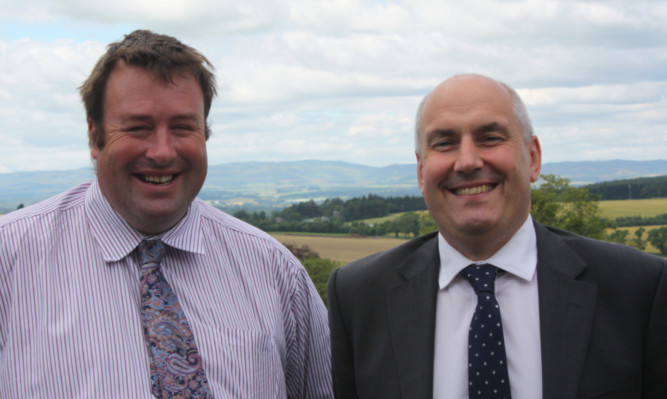As of August 18, leading meat processor ABP will be paying suppliers to its Perth abattoir according to the results of Video Image Analysis (VIA).
This is a particularly significant development as it is the first commercial use of the technology in Great Britain for grading purposes and could through time be developed to completely change the way farmers are paid for their beef cattle.
In the first instance, however, and for the foreseeable future, the technology will only be used to replace visual carcase grading with payment bands remaining much as before, albeit with more bands in the payment grid.
At a launch event at Perth, Stuart Roberts, agriculture manager with ABP, said: “This is a really important day and it has been a long time coming.
“The VIA machine uses advanced 3D scanning technology to mechanically grade the carcase.
“ABP has invested £100m in recent years across all its plants and this is just a small part of that commitment.
“We have actually had the VIA machine at Perth for eight years and have used it for trials and gathering data, but at last it is now to be used on the line.”
ABP, which is Irish-owned, already operates six VIA scanners in the Republic of Ireland and for the last three years has used the technology in its two plants in Northern Ireland.
“Put simply, it is a case of mechanically grading the carcase into the well-recognised EUROP classification for conformation and fat.
“It replicates what a human can do but in a more consistent way.
“It can also identify the meat yield in nine different primal cuts, which could be significant if the payment system were to change.
“For example, two seemingly identical carcases weighing the same could produce different yields of a premium cut such as strip loin. One might yield 6.5kg and the other might yield 9kg.
“If we were to move on to using that system we could start to reflect the real value in a carcase,” said Mr Roberts.
In the meantime, however, the EUROP grid would stay because it is the standard for mandatory price reporting to the EU.
Every VIA machine in Europe is calibrated to exactly the same standard and, according to Mr Roberts, there is no “magic screw” that can be turned to change the standards.
As a further safeguard, images were kept for every carcase and would be available to producers on request.
Mr Roberts and Frank Ross, general manager at ABP Perth, said they hoped farmers would take the chance to visit the plant and see carcases from their cattle being graded.
Line speed at Perth would be unaffected and would stay at 45 to 46 cattle per hour.
The cost of the VIA robotic scanners is “commercially sensitive” according to Mr Roberts, but was put conservatively at “over £100,000.”
Mr Ross added: “The cost is not only in the machine but in creating the right environment and having enough space.
“For example, steam could affect it so the ventilation has to be right, as does the lighting.
“I am very confident that we will have full reliability, though. We have run 2,500 cattle through the VIA system already just to gain our licence.”
Scottish Beef Association chairman Scott Henderson was among the industry figures present at the launch.
“When VIA was introduced in Northern Ireland there were some adverse comments from producers. Will I be getting phone calls from my members once this starts?” he asked.
That was unlikely, thought Mr Roberts. “The introduction was not handled as well as it could have been in Northern Ireland and we have learned the lessons.
“There has to be an acceptance, however, that this is a very conservative supply chain. That puts the onus on us at ABP to communicate with our producers.
“There will be people who don’t like it at first, and we realise that.”
John Cameron, Balbuthie, Leven, said: “I think the beef industry should compliment ABP on taking this forward.
“Surely we have an inherent right to expect conformity when it comes to carcase classification.”
ABP UK has had a presence at Inveralmond on the outskirts of Perth since 1997 and has gradually increased capacity from 800 cattle per week to the current 1500. “We have an ongoing investment programme and intend to keep on developing and expanding the numbers,” said Frank Ross, general manager at the plant. “We are looking to source cattle that can be branded as Scotch Beef especially for our European export markets. My main concern is the size of the suckler cow herd and whether we will see it grow again. The real point of difference in Scotch Beef is the strong proportion of beef genetics which comes from the suckler herd. We are at a real crossroads now.”
“ One of the main benefits of moving to VIA and a fifteen point payment grid is that we will be able to reward those who produce better cattle. In coming weeks we will be speaking to farmers as much as we can to explain how this will work.”
